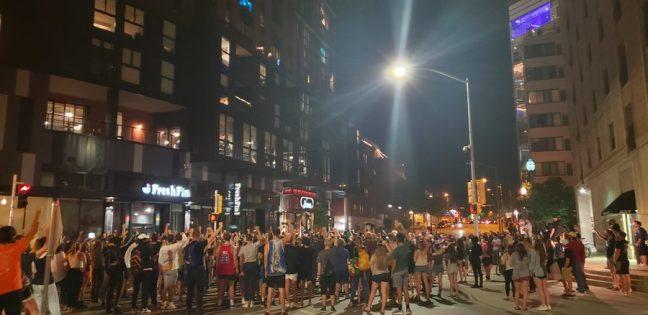Long before the trial, the Kyle Rittenhouse shootings had represented much more than an isolated incident of gun violence.
Aug. 25, 2020, Kenosha, Wisconsin was becoming increasingly tumultuous following the shooting of Jacob Blake, a Black man, by a police officer just days prior. The broad issues of police brutality and racial injustice which situate the Rittenhouse shootings make this case a critical source of debate for the American people.
Rittenhouse, at the time a 17-year-old from Antioch, Illinois, traveled to Kenosha, allegedly to protect businesses and offer medical support amidst the protests. Hours later, he had fatally shot two men and seriously injured a third.
Claiming self-defense, Rittenhouse faced multiple charges, including underage possession of a firearm — a charge later dropped by the judge, — first degree intentional homicide, attempted first-degree intentional homicide, first-degree reckless homicide and reckless endangerment.
The defense argued that not only was Rittenhouse exercising his right to bear arms, but also his right to defend himself from the protestors who were indiscriminately characterized as rioters and criminals.
The prosecution argued that he was never at risk of the amount of danger that would have justified his violence, especially because bringing an automatic weapon could be interpreted as a provocation.
It should also be noted that Rittenhouse is staunchly pro-police, claiming to support “Blue Lives,” a Black Lives Matter counter-movement that falsely compares law enforcement occupations — a job that officer choose — to the color of one’s skin assigned at birth. Rittenhouse’s background reveals a dangerous, entitled and juvenile sense of vigilantism.
Inside the courtroom, Rittenhouse displayed a noteworthy disposition. He was mostly self-assured, even snarky, during his cross-examination as he casually undermined the prosecutor’s questions with noncommittal responses.
This should not come as a surprise — newly an adult, he is facing consequences he may not even fully comprehend. But it is because of his social position as a white male that he is afforded the privilege of being treated as such.
Perhaps the most memorable moment of Rittenhouse’s testimony took place Nov. 10, as he broke down in tears in the middle of his direct examination. Whether or not his tears were real, Rittenhouse, who is on trial for homicide, wielded his whiteness to play the victim in a way that a man of color never could.
In contrast to their white counterparts, men of color are fiercely villainized within the criminal justice system. Despite making up only 12 percent of the population, Black men comprise one third of the prison system.
Deeply ingrained in American society is the false association of Black men with criminal behavior. And at an alarmingly consistent rate, Black male shooters are seen as violent criminals, while white men shooters are seen as victims.
This is why the social context framing the trial matters. This is why race matters. Though both the perpetrators and victims are white, the impacts of race in the larger picture are just as pervasive.
Because the Rittenhouse trial does not exist in a vacuum, these factors are incredibly important to accurately analyze the potential outcomes.
If Rittenhouse had been charged with first degree intentional homicide he would have faced a life sentence. This would represent a decry of vigilante justice and gun violence.
Notably, this outcome would have set a precedent for a more strict interpretation of self defense laws. In other words, minor provocations cannot be taken as a justification for the use of fatal violence.
But, Rittenhouse was found not guilty of any of the charges. This normalizes gun culture and solidifies a loose definition of self-defense. Perhaps most importantly, it reinforces the entitlement of young white men to serve as vigilantes for narrow-minded causes — a frighteningly plausible outlook for the future.
Because of the political climate and ideological disputes connected to it, this trial is more than the sequence of events on the night of Aug. 25. Regardless of the verdict, we don’t know exactly how to move forward because the case encompasses some of the most complex conversations of American social discourse.
For better or for worse, trials like these cannot be separated from their social and political contexts. To isolate the two would be to ignore the race relations that underpin many social conflicts in the first place.
Jacob Blake has yet to find peace after being the victim of police brutality. But if we are ever to truly understand the depth of impact of the Rittenhouse case, we have to reckon with the systemic factors that led Blake to experience what he did. Perhaps then justice will prevail.
Celia Hiorns (hiorns@wisc.edu) is a freshman studying political science and journalism.


